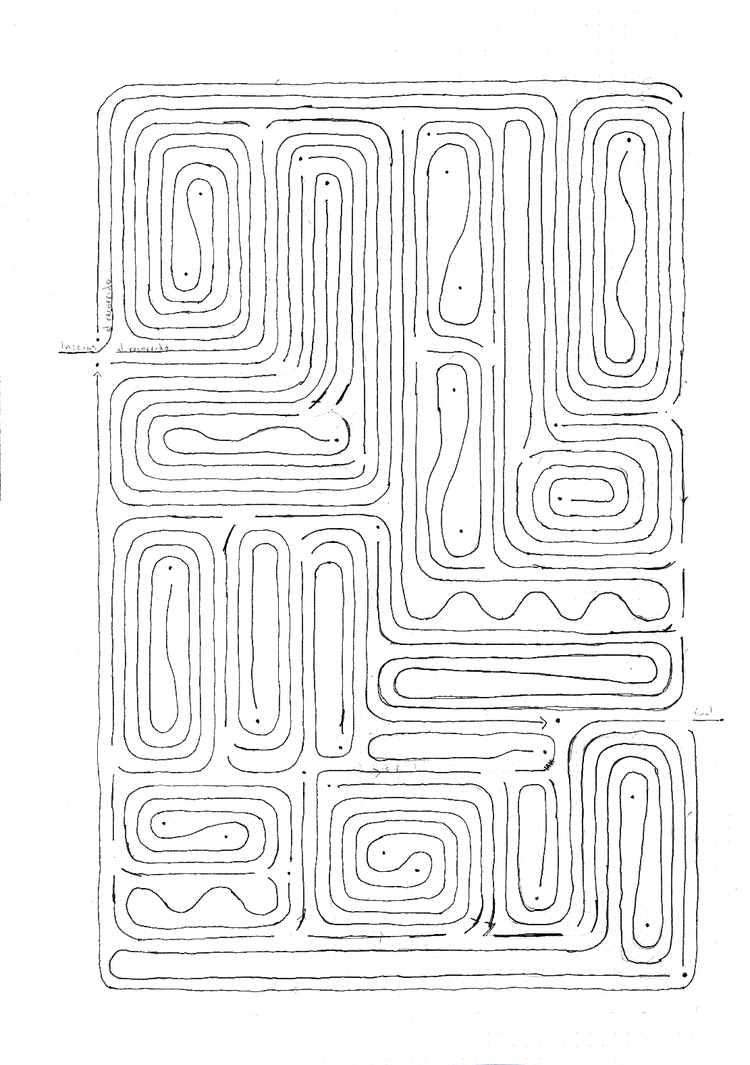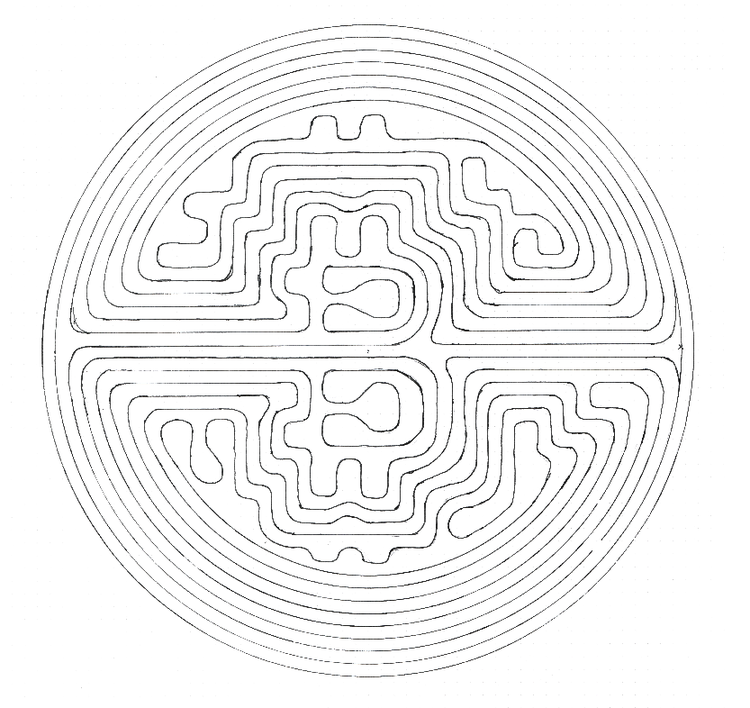THIS PAGE IS UNDER CONSTRUCTION. PLEASE HANDLE WITH CARE.
Allis Fiction readers receive weekly copies of patterns and texts by email.
They can use these patterns to write their own texts.
If you are not yet a reader, subscribe here
HOW TO WRITE TEXTS USING THESE PATTERNS?
Some Readers wonder how Allis Fiction writes their texts, following unconventional rulings, made mostly if infinite lines that help write endless paragraphs.
Here is a quick summary of how the process works. It's quite simple, actually:
It all starts with a pattern. One that must be created specifically for each text or meditation. A custom "ruling" that the text eventually will follow all the way to it's own ending.
A pattern may look like this (with one beginning and multiple endings):

Or like this (five different lines which allow for 5 different endless paragraphs):

Or like this (a single line for an infinite text, divided in 4 squares and styled using tracing design software):

Sometimes, when the pattern is simple, it is easy to export the file to an image editing software and stylize the lines to follow. In the previous example the original layout was made by hand to ensure that it will fit the same sized paper, and then styled using an image editing software.
Of course you can create your own patterns, layouts or rulings (call them what you may) or you can use the ones from Allis Fiction.
To receive them constantly by email, you can subscribe to the Newsletter here.
Previously used patterns can be obtained at nothing.works. All purchases from nothing.works include the layout and Allis Fiction readers always have 50% off all purchases
Allis Fiction uses dotted A3 sized paper to keep a constant distance between the lines and to avoid lines bumping or crossing into each other. The patterns from Allis Fiction also try to cover up as much space from the page as possible while keeping a proper distance between elements in order to allow readability, along with the maximum available space to write.
After the layout is made, it is taped to a flat surface.
INSERT IMAGE
Allis Fiction uses cardboard sketchbook paper, sized 11x17 or a bit larger for this "bottom layer"
On top of the bottom layer, a blank 11x17" (tabloid) page is taped. This way you can "see through" the blank page the ruling that you need to follow.
INSERT IMAGE
Once the blank page is set on top of the layout, you can start writing.
INSERT IMAGE
The whole point of this type of writing is that you do it continuously, whithout breaking or stopping. This creates a unique way to handwrite, by not breaking at the end of each line, allowing your mind or thoughts to flow freely, without stopoing to go back to a rpevious point in the page.
Subscribe to receive weekly Allis Fiction images and patterns for free!



Comments ()